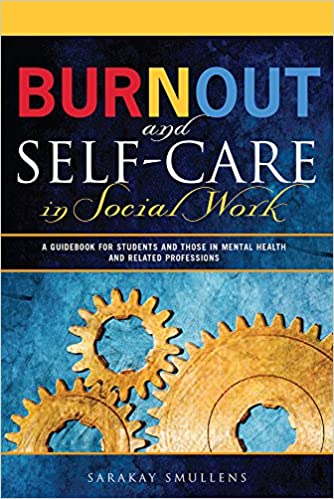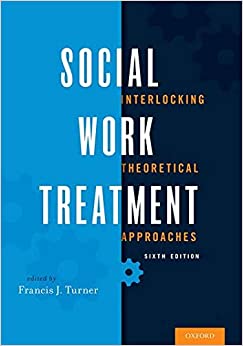
Books Social Workers should read include many that are well-know and some newer ones. Here is our list of 10 that are a must-read for all! Social workers are constantly assessing needs and supporting people and communities in need of help. It is a satisfying but challenging career. While experience brings knowledge and expertise, it is also important to stay current through reading.
This list contains ten books every social worker should read. It is a diverse list with books about self-care or a child’s developing mind for social workers as well as books related to the field of social work.
What Are Some Social Work Books And Themes To Focus On?
- mental illness
- child abuse
- trauma
- social justice
- social sciences
- eating disorders
- restorative justice
- personal experiences of those in the field
- well being of those receiving social work care
- books on foster homes
- books about the experience of African Americans and social work
- Books about Children’s Rights In New York
- adverse childhood experiences
- whole brain child
- rising strong
- books by bruce perry
- Daring Greatly
- Books about Social work in New York
- Books on the nasw code
1. Burnout and Self-Care in Social Work: A Guidebook for Students and Those in Mental Health and Related Professions

Students entering the field of social work or a social work degree, as well as practitioners who have been in the field for years, must understand how to prevent burnout, compassion fatigue, and secondary traumatic stress. These can become debilitating issues for people in the helping professions. Because very empathetic people go into the helping professions, they are especially susceptible to being overwhelmed by the problems their clients face, and the injustices they come across, in their daily work.
The author stresses the importance of “examining one’s own life, reflecting on how one thinks about and approaches the work, and maintains effective emotional boundaries.” She calls these “gifts to the self,” that can help clinicians “stay with” their clients empathically, without “taking on” their problems and personal suffering. Doing so, she believes will lessen the potential for countertransference pitfalls and vicarious traumatic stress.”
by: SaraKay Smullens
2. Social Work Treatment: Interlocking Theoretical Approaches

This textbook was assigned by one of my professors in my social work doctoral program. I’ve included it on the list because it is an incredibly comprehensive, detailed, and thorough guide to most of the theoretical approaches used in social work practice and treatment. From cognitive behavior theory to ecological theory to narrative theory to ecopsychology, this text covers the seminal and even newer theories used in social work practice. Social work practitioners need to keep in mind and understand the theories behind their therapeutic approaches. This book does not necessarily represent those that can be read from cover to cover, but it is an invaluable guide to understanding the theory behind the practice.
Edited by Francis J. Turner
3. Another Day in the Death of America: A Chronicle of Ten Short Lives

It seems that every few months there is a gun massacre somewhere in America. This is the type of gun violence that gets the media’s attention; but what Mr. Younge highlights in his book is the daily toll of gun violence on youth in America. It is the gang violence, the young kids who were in the wrong place at the wrong time, and the accidental shootings.
This type of gun violence has been raging for decades and it is what drives our gun deaths statistics to levels unknown in other developed countries. Mr. Younge chronicles the deaths by gun of ten young Americans illustrating how senseless and tragic each death is.
by: Gary Younge
4. Insane Consequences: How the Mental Health Industry Fails the Mentally Ill

Our current system for treating and managing persistent, debilitating, mental illness in this country is failing. Our prisons are warehousing the chronically ill and our current outpatient and inpatient mental health system can’t keep up with the demand for treatment and services.
We have large numbers of ill persons living on the streets of our towns, suburbs, and cities. Our inpatient hospitalization system is overwhelmed and there are not enough providers in our outpatient treatment centers, especially in cities and rural areas. This book provides ideas for reforming the mental health care system so that it better serves the people who so desperately need humane treatment and understanding.
by: DJ Jaffe
5. Lead from the Outside: How to Build Your Future and Make Real Change

A leader in politics, business, and the nonprofit world, Stacey Abrams is a woman to watch. Most recently she served as minority leader in the Georgia House of Representatives and ran for Governor of Georgia. During her campaign, Abrams fought hard against voter suppression. She lost by a razor-thin margin to her opponent but did not give a typical concession speech. Instead, she accepted that the legal process in which purging of the voter rolls and other voter suppression tactics were litigated designated a winner.
She subsequently continued to stand as a leader in the fight against voter suppression and for voter empowerment. In this book Abrams shares her insights on being a woman leader of color, an “outsider,” and how leading from the outside can make you stronger and give you a unique voice that is heard and appreciated.
by: Stacey Abrams
6. The Little Book of Restorative Justice: Revised and Updated

Mr. Zehr is a founder of the restorative justice movement in the U.S. Restorative justice incorporates a process of allowing a victim to confront his or her victimizer, discuss the impact the crime has had on their life, and to forgive the individual if they so choose. It’s not a process of letting someone who has done wrong get off easy, rather it’s a process of helping the victim take control of the situation including when and how to forgive. The process also allows those who have done wrong to set things right in some way, either through an apology, offering details about the crime that only they can give, or providing their victim with some type of support. It is a movement that shows no signs of slowing down and can even be adapted for use in schools.
by: Howard Zehr
7. Rise of the Robots: Technology and the Threat of a Jobless Future

By the year 2030 half of our current job titles could be a thing of the past. This is not to say that there won’t be new jobs that come along due to automation and artificial intelligence. But people who can’t retrain or just don’t have the education to perform jobs repairing technology, for example, will be left behind. According to this book, it doesn’t have to be a complete doomsday scenario of extreme inequality and instability in society
However, with the right planning, thinking, and imagining, society can be better under this new emerging economy with people having more leisure time and less stress. It’s going to take a lot of human minds, including thinking and action by social workers, however, to get to this happier ending.
by: Martin Ford
8. The Body Keeps the Score: Brain, Mind, and Body in the Healing of Trauma
Bessel van der Kolk, a psychiatrist and academic, broadens the understanding of how traumatic experiences and memories are trapped in the body. In this classic book on trauma, van der Kolk explains the neuroscience of trauma and how the treatment should integrate a mind and body approach.
The book explores personal stories of trauma, resilience, and recovery and the widespread impact of trauma on societies across the world. He also suggests specific approaches for helping patients move past trauma and live fuller lives. It is a must-read for social workers who want to work with traumatized individuals.
by: Bessel van der Kolk, M.D.
9. The New Jim Crow: Mass Incarceration in the Age of Colorblindness
This book is quickly becoming a classic. It explores the numerous ways in which modern incarceration has put a disproportionate number of African American men and women behind bars and disenfranchised them, and how this system of oppression is no different from the days of Jim Crow when discrimination was legal and accepted. It is a must-read for social workers interested in prison industry reform the fixing the criminal justice system.
by: Michelle Alexander
10. What the Eyes Don’t See: A Story of Crisis, Resistance, and Hope in an American City
If you aren’t already familiar with the story of how thousands of children and adults were poisoned by their own drinking water in Flint, Michigan, or if you do know the story but want to know more, this is a must-read book. Dr. Hanna-Attisha learned from a friend who worked for the EPA that the water in Flint might have high levels of lead due to the corrosion of pipes delivering the water supply to the community.
She did not see symptoms of lead poisoning in her young patients, because there aren’t any. So she began to test their blood and found that the population had high levels of the metal. Lead poisoning severely impairs healthy brain development for children. The author has been a leading voice in educating her community and the country about how the negligence of public officials had led to the poisoning of an entire community.

